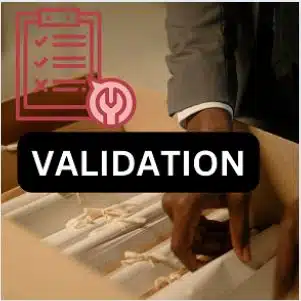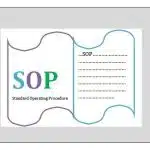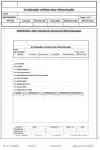Know here about validation protocol writing techniques in pharmaceuticals.
Table of Contents
When writing a validation protocol in the pharmaceutical industry, it’s important to follow certain guidelines and include specific elements. Here’s a step-by-step guide on how to write a validation protocol:
Title and Introduction:
Start with a clear and descriptive title for the validation protocol.
Provide an introduction that explains the purpose and scope of the validation activities. Mention the system, process, or equipment being validated.
Objective:
State the overall objective of the validation, which could be to demonstrate that the system, process, or equipment meets predetermined acceptance criteria.
Define specific objectives, such as accuracy, precision, reliability, or robustness, depending on the nature of the validation.

Scope:
Clearly define the boundaries and limitations of the validation, including the specific components, systems, or processes being validated.
Specify any excluded elements or activities that are not part of the validation.
Responsibilities:
Identify the individuals or departments responsible for conducting and overseeing the validation activities.
Define their roles and responsibilities, including who will prepare protocols, execute tests, analyze data, and make decisions.
Read Also: SOP for Concurrent Process Validation
Validation Approach:
Describe the overall strategy for validation, such as whether it will be performed in-house or outsourced.
Define the validation methods, procedures, and acceptance criteria to be used.
If applicable, reference relevant regulations, guidelines, or industry standards that should be followed.
Validation Activities:
Provide a detailed description of each validation activity to be performed, including test procedures, sampling plans, and acceptance criteria.
Specify the equipment, instruments, materials, and reagents to be used.
Include any specific precautions, controls, or environmental conditions required during testing.
Data Analysis and Acceptance Criteria:
Explain how data will be collected, recorded, and analyzed during the validation process.
Define the acceptance criteria for each validation parameter or performance characteristic.
Clarify the statistical methods or calculations that will be applied to analyze the data.
Deviations and Non-Conformances:
Outline the procedures for documenting and addressing any deviations or non-conformances encountered during validation.
Specify the criteria for determining when revalidation or corrective actions are necessary.
Validation Report:
Describe the format and content requirements for the final validation report.
Include a summary of the validation results, conclusions, and any recommendations for improvements or further actions.
Approval and Sign-Off:
The concerned department head is responsible for checking/reviewing the validation protocol.
The head of the Quality Assurance Department is responsible for approving the validation protocol.
Include spaces for signatures and dates to indicate formal approval.
Change Control:
Define the procedures for managing changes to the validated system, process, or equipment.
Specify the criteria for determining when a change requires revalidation.
Outline the steps for documenting and implementing approved changes.
Training Requirements:
Identify the training needs for personnel involved in the validation activities.
Specify the required qualifications, skills, and training programs.
Document the training plan and ensure that personnel are adequately trained before conducting validation activities.
Safety Considerations:
Address any safety considerations associated with the validation activities.
Identify potential hazards, risks, and control measures.
Ensure that appropriate safety procedures, protective equipment, and emergency response plans are in place.
Documentation:
Outline the documentation requirements for the validation protocol.
Include references to relevant standard operating procedures (SOPs) or work instructions.
Specify the format, numbering, and organization of the validation documentation.
Schedule and Timeline:
Provide a timeline for each validation activity, including start and end dates.
Consider dependencies, critical path analysis, and resource availability when developing the schedule.
Allow sufficient time for review, analysis, and reporting of validation results.
Risk Assessment:
Conduct a risk assessment for the validation activities.
Identify potential risks, their likelihood, and impact.
Implement appropriate risk mitigation strategies and controls.
Change Management:
Define the procedures for managing changes to the validated system, process, or equipment post-validation.
Specify the criteria for determining when a change requires revalidation.
Outline the steps for documenting and implementing approved changes.
Final Review and Approval:
Allocate time for a final review of the validation protocol.
Involve relevant stakeholders, including quality assurance and regulatory affairs, for a comprehensive review.
Obtain formal approval and sign-off from authorized personnel before initiating validation activities.
Revalidation:
Discuss the requirements for revalidation, including the frequency and triggers for revalidation.
Define the procedures for conducting revalidation activities.
Specify any changes in the validation approach or acceptance criteria for revalidation.
Appendix:
Include any supporting documents, references, or forms relevant to the validation protocol.
Examples may include equipment specifications, calibration records, validation templates, or regulatory guidelines.
Conclusion:
Remember to follow good documentation practices throughout the writing process, including version control, proper formatting, and clear language. It’s also important to review and revise the validation protocol as necessary and seek input from relevant stakeholders before finalizing it.

Abdus Sobhan Salim is professional experienced pharmacist in pharmaceuticals, author and founder of pharmabossbd.com, the first Bangladeshi pharmaceutical blogger since 2019.



